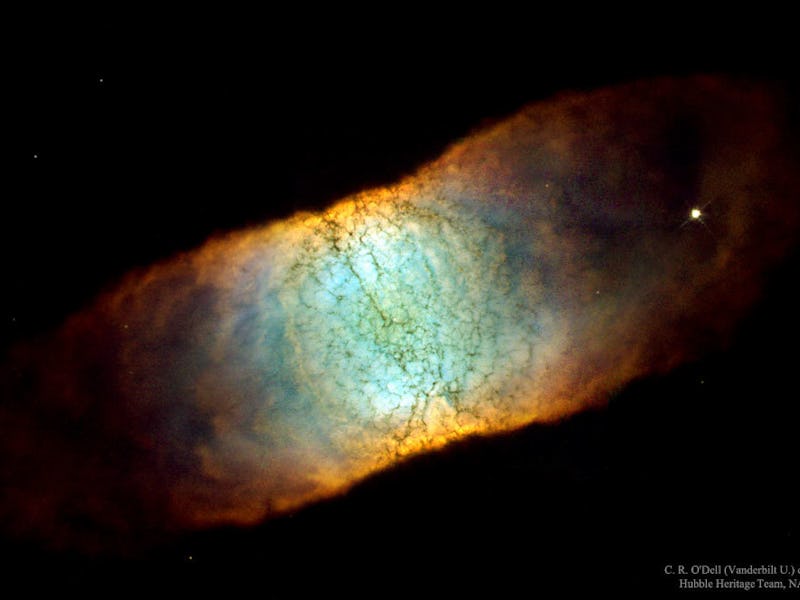No, this exquisite photo is not from LG’s new paper-thin OLED TV; it’s a snapshot of a planetary nebula with a strange square shape, taken by NASA’s Hubble Space Telescope.
The image you see here is a composite of several images from the Hubble Space Telescope, created in 2002, of a nebula called IC 4406. When we view it from Earth, we are looking at it from the side. But, if we could fly over it we would find it resembles more of a donut.
The reason it seems to be confined to such strict lines is because the gravitational force from the dying star keeps the dust and gas swirling around it in perfect alignment, making for a beautiful image.
This square nebula is the result of hot gas and dark dust being forced out from the star.
The bright colors come from hot gas flows on the inside of the donut that are ionized by light shining from the star. When the light hits oxygen atoms it turns blue, when it hits hydrogen it turns green, and when nitrogen is struck, it turns as red. The final image shows the differences in concentration of these three gases in the nebula.
Another interesting detail within the nebula is the dark black lines criss-crossing about within the dusty ring. They are also made up from the gas being emitted from the nebula but the density of this gas is so great compared to the rest of the ring, that it shows up as a veiny silhouette throughout the formation.
It’s called a planetary nebula because when the first astronomer to discover this type of object, William Herschel, saw it through his telescope, he mistook it for a planet because of it’s round shape. Here’s an image of a planetary nebula from the center of the ring.
Planetary Nebula
This is the last stage of a nebula’s lifespan before it goes dark, like a farewell celebration. In just a few million years it’ll be nothing more than a white dwarf drifting around the universe. Poor thing!
